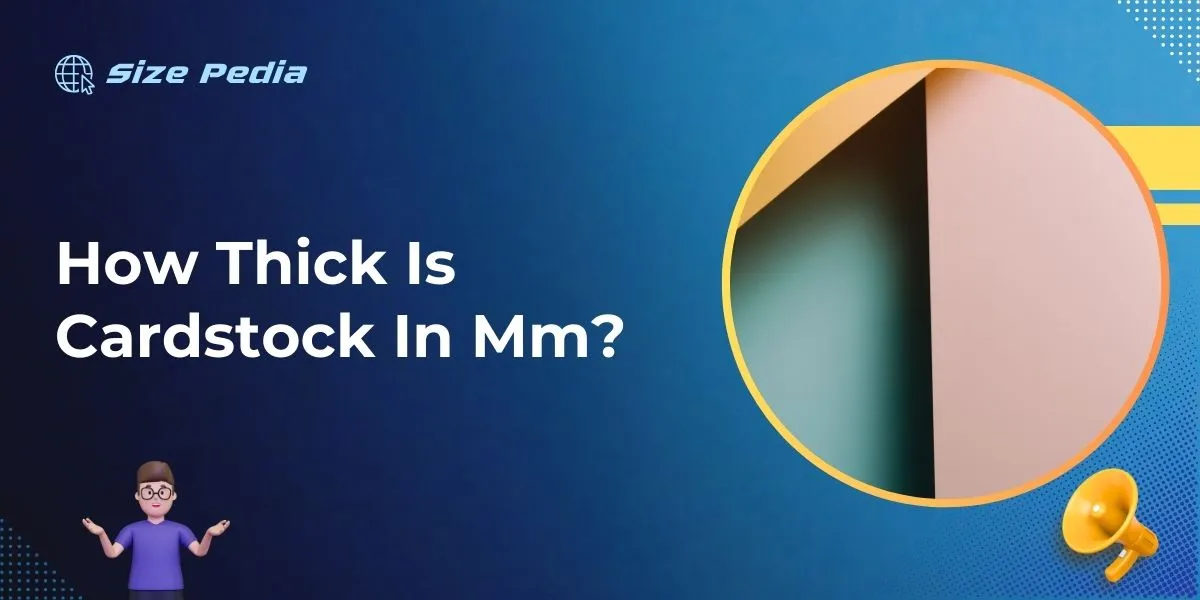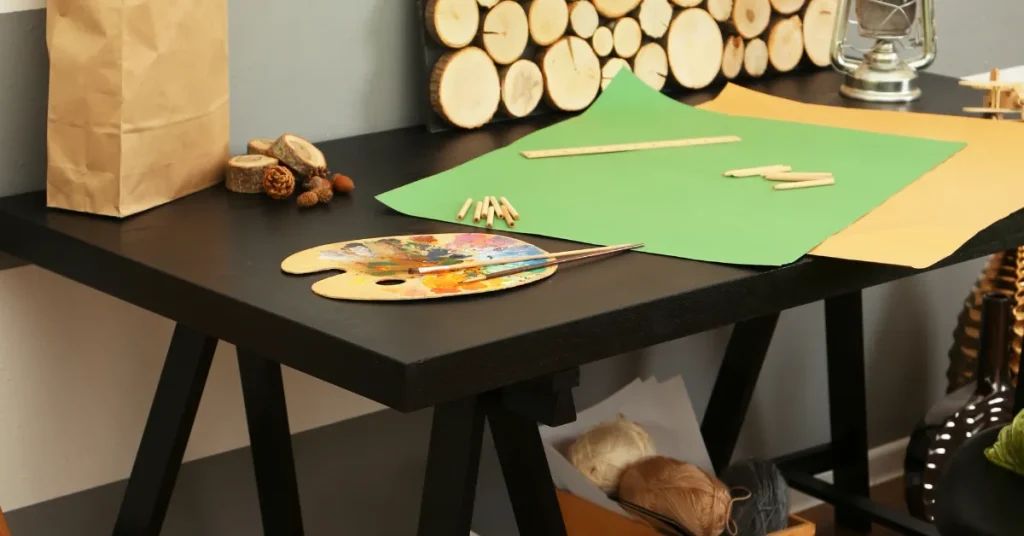Cardstock thickness typically ranges from 0.25 mm to 1.5 mm. This thickness varies depending on the use and quality of the cardstock.
Cardstock, a sturdy paper option, serves a multitude of purposes ranging from business cards to postcards, and even crafting and scrapbooking.
Its thickness, expressed in millimeters or points, gives it a more substantial feel than standard writing or printing paper.
Choosing the right cardstock thickness is essential for the desired end use, as a thicker cardstock provides durability and a premium feel, while thinner cardstock is more flexible and economical.
Whether for professional print jobs or personal projects, understanding cardstock specifications ensures your project has the desired quality and endurance.
Selecting the best cardstock is a balance between performance, cost, and the tactile experience it offers to the end-user.

The Basics Of Cardstock Measurement
The Basics of Cardstock Measurement are crucial for anyone working with paper crafts, printing, or packaging. Understanding the thickness of cardstock is essential. It can affect postage costs, durability, and suitability for certain projects.
Metric Vs. Imperial: Understanding The Units
Cardstock thickness can be measured in two systems: metric and imperial. In the metric system, thickness is typically given in millimeters (mm), while in the imperial system, it is often described in points or thousandths of an inch.
| Measurement System | Unit |
| Metric | Millimeters (mm) |
| Imperial | Points or Inches |
Cardstock Defined: Weight, Thickness, And Types
Cardstock is a sturdy paper available in various weights, thicknesses, and types.
- Weight: Measured in pounds (lbs) or grams per square meter (gsm).
- Thickness: Measured in mm or points. It influences how the paper feels and how it is used.
- Types: From matte to glossy, and textured to smooth, each type serves a different purpose.
For example, 65 lb cardstock is thinner than 110 lb. But knowing its mm measurement is the best way to compare thickness across different brands and types.
Navigating Cardstock Thickness

Cardstock is a popular choice for DIY projects, invitations, and business cards. Its thickness gives it a sturdy feel. But what does thickness mean in millimeters? Let’s explore this material’s dimensions.
From Pounds To Millimeters: Conversion Essentials
Often, cardstock is measured in pounds, referring to the weight of a ream (500 sheets). This measurement can be confusing. How does poundage translate to actual thickness?
| Weight (lb) | Thickness (mm) |
| 65 lb | 0.18 mm |
| 80 lb | 0.21 mm |
| 100 lb | 0.27 mm |
| 110 lb | 0.29 mm |
| 130 lb | 0.34 mm |
These numbers are estimates. Factors like material and manufacturing process can change them. Always check with the manufacturer for exact measurements.
Average Thickness Ranges For Cardstock
Cardstock can vary in thickness. Most cardstock falls within a common range. This range is between 0.2 to 0.4 millimeters thick.
- Lightweight: Great for printing, around 0.2 mm.
- Medium Weight: Perfect for cards, around 0.25 mm to 0.3 mm.
- Heavyweight: Ideal for book covers, about 0.35 mm to 0.4 mm.
Different projects require different thicknesses. Consider the project’s purpose and choose cardstock wisely.
Cardstock In Arts And Crafts
Cardstock is a popular material in the world of arts and crafts. Its versatility allows for endless creativity. Notably, cardstock thickness is measured in millimeters (mm), which impacts its usability.
Thicker cardstock provides durability, while thinner options offer flexibility. Mastering the use of various cardstock gauges can elevate your projects to new heights.
Choosing The Right Thickness For Your Project
Selecting the correct cardstock thickness is crucial for your craft’s success. Factors such as the type of project, the need for structure or flexibility, and the method of attachment must guide this choice. Examine your project’s requirements carefully before deciding.
- Invitations often use medium thickness for a balance of sturdiness and elegance.
- Scrapbooking pages may vary, with thicker options providing a strong foundation.
- Models or structures need thick cardstock for stability.
Common Uses Of Different Cardstock Gauges
Cardstock gauges serve specific purposes in arts and crafts. The table below outlines common uses for various thickness levels:
| Thickness (mm) | Uses |
| 0.1 – 0.3 | Origami, paper flowers |
| 0.3 – 0.6 | Handmade cards, photo mats |
| 0.6 – 0.9 | Postcards, business cards |
| 0.9+ | Book covers, boxes |
Note the durability for heavier weights and the delicate nature of lighter ones. Each thickness level has a unique role and can dramatically affect the final product’s look and feel.
Tools Of The Trade
When working with cardstock, thickness is key. It’s essential to know just how thick your material is, especially in millimeters, for precise projects.
The right tools can make all the difference. Let’s look at what you need for measuring and working with thick cardstock.
Measuring Instruments For Precision And Accuracy
Getting the thickness of cardstock right is a game of precision. Use these instruments to measure with certainty:
- Calipers: They provide an exact measurement and can be digital or analog.
- Micrometers: Use these for extremely precise readings, often down to hundredths of a millimeter.
- Rulers: A clear ruler with a millimeter scale can be a quick measurement tool.
Remember, for the best results always measure cardstock on a flat, stable surface.
Tips For Handling And Cutting Thick Cardstock
Cutting cardstock requires care. Here’s how to handle and cut thick cardstock with ease:
- Use Sharp Tools: Keep your cutting tools sharp for clean cuts.
- Score First: Score your fold lines before you cut for neater edges.
- Steady Pressure: Apply even pressure for consistent cuts without tearing.
Always use a cutting mat. It saves your work surface and keeps the paper firm.
Use clamps or weights to hold the cardstock still if the piece is large. With the right tools and techniques, thick cardstock projects come together like a dream!
Buying Guide For Cardstock Thickness

Exploring the world of papercraft? Understanding cardstock thickness is vital. Cardstock is a popular choice for creative projects, invitations, business cards, and more.
With various thickness levels, measured in millimeters (mm), selecting the right one is crucial for your purpose.
This guide highlights key points to consider when buying cardstock, ensuring you make an informed decision.
Reading Labels And Specifications
Finding the perfect cardstock begins with knowing how to read labels. Cardstock thickness is often indicated in points or millimeters. One point (pt) is roughly equal to 0.001 inches or 0.0254 mm.
Cardstock typically ranges from about 176 to over 300 gsm (grams per square meter), which translates to approximately 0.2 mm to 0.4 mm in thickness. Look for these specifications:
- Point (pt) size
- Grams per square meter (gsm)
- Millimeters (mm)
Using a conversion chart may help in comparing different units of measurement.
Top Brands And Where To Find Them
Selecting a reputable brand ensures quality and durability. Some of the most recognized cardstock brands include:
- Neenah Paper
- Hammermill
- HP Paper
- Staples
These brands are widely available at craft stores, office supply shops, and online. Here’s where to start looking:
| Brand | Store |
| Neenah Paper | Amazon, Michaels |
| Hammermill | Staples, Office Depot |
| HP Paper | Best Buy, Walmart |
| Staples | Staples (own brand), Online |
Searching online sites like Amazon or eBay offers a broad range of options, often with customer reviews to guide you.
FAQs About How Thick Is Cardstock In Mm
How Thick Is Normal Cardstock?
Normal cardstock typically ranges from 0. 008 inches (0. 2 mm) to 0. 018 inches (0. 46 mm) in thickness. This equates to about 65 lb to 110 lb cardstock paper by weight.
How Thick Is Cardstock In Mil?
Cardstock thickness can range between 7 mil to 18 mil, with variations depending on the brand and type.
How Thick Is Paper In Mm?
Standard printer paper thickness is typically around 0. 1 millimeters. Premium photo paper can be around 0. 3 millimeters thick.
What Is 14 Point Cardstock In Mm?
14-point cardstock is approximately 0. 014 inches thick, which translates to about 0. 35 mm in millimeters.
Conclusion
Understanding cardstock thickness is crucial for your project success.
We’ve examined the common range, from the lightweight 148 gsm to the sturdy 300 gsm, equating to roughly 0. 2-0. 4 mm. Select the ideal weight to elevate your crafts, confident in its measure.
Happy crafting with the perfect paper choice!
Resources:
1. https://mms.gsfc.nasa.gov/epo_mms_card_model.html
